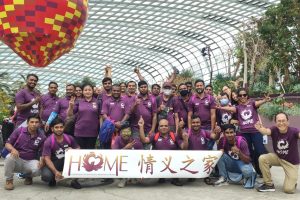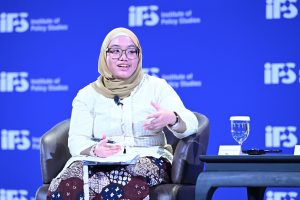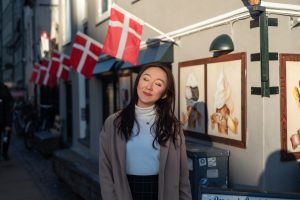I was having yong tau foo with Zakir one Sunday in December 2018. We were talking about our families, our attitudes towards love, mental health in the migrant community, and the migrant poetry scene. He paused, mid-chew, sighing, “You know Yong, I really regret coming to Singapore.”
Surprised at the sudden turn in the conversation, I asked him why.
“Once I come here, people don’t see me as human. They only see me as a migrant worker.”
He shared a story of an encounter with a Singaporean girl who made him feel visible for the first time. She was the first Singaporean friend he made, he said, and he spoke of her with warmth and fondness.
The story touched me so much I remember it till today, but time has made the details fuzzy. I asked if Zakir could tell me the story again, this time in writing (translated with the help of Arjit Shaw), so you can read it in his own voice:
“When I first came to Singapore, I used to work at a club as a gardener. Most of the time, people would walk past me, treating me as though I were invisible. One day, I came across someone named Chu Ange. Every afternoon, she would wait in front of the club for her father to pick her up. If he was late, she would visit the garden to take a close look, and if I’m around, she would question me about how long the plants take to come out of the seeds and so on.
In one such meeting, Chu Ange told me her boyfriend has to serve national service for two years. In another session, she said both her boyfriend and her are of the same age—eighteen years old. I answered, there is a poem in Bengali, that has the title—The Age of Eighteen (Athero Bochor Boyos). The poet is Sukanta Bhattacharya, one of my most favourite poets. She told me she wanted to read an English translation of the poem.
In subsequent meetings, she came to know that I am a poet too. Again, she insisted on reading the translation of the poem, “the age of eighteen.” So I asked a friend of mine back in Bangladesh, for a reading and the poem came via postal mail two weeks later.
The next day, I handed over the envelope to Chu Ange. She read it, and exclaimed—what a beautiful poem! A week later, she accompanied her boyfriend and introduced me to him—Zakir is a poet and a farmer! They both praised the poem and invited me to her home on her birthday, insisting that I have to read the poem on that day, along with some poetry of mine. Initially, I was shy about this invitation, but after their insistence, I eventually agreed.
I took leave from work on a Saturday. In the afternoon, her father took me to their home—an HDB block in Bishan. It was my first time being invited to Singaporean house. I was uncomfortable. The whole family warmly welcomed me, and that heightened my discomfort. Chu Ange cut her birthday cake, we sang a birthday song, and it was my turn to recite the poem. She introduced me and the poem, and I recited The Age of Eighteen. After I was done, everyone praised the poem. Chu Ange’s boyfriend said, the poem has touched the heart of Chu Ange, and has moved her a lot. She just nodded, and kept on saying “It is beautiful.””
I found the story of Zakir’s unexpected friendship with Chu Ange beautiful yet thought-provoking. However, I also asked myself why I found these friendships seemingly unique. I wondered, what does Zakir’s story suggest about the current social fabric in Singapore, and what are some structural issues at work that lead to such segregated social spheres?
Why could such diverse friendships be important, and what kinds of spaces might help build the kinds of organic interaction necessary to facilitate genuine local-migrant interactions?
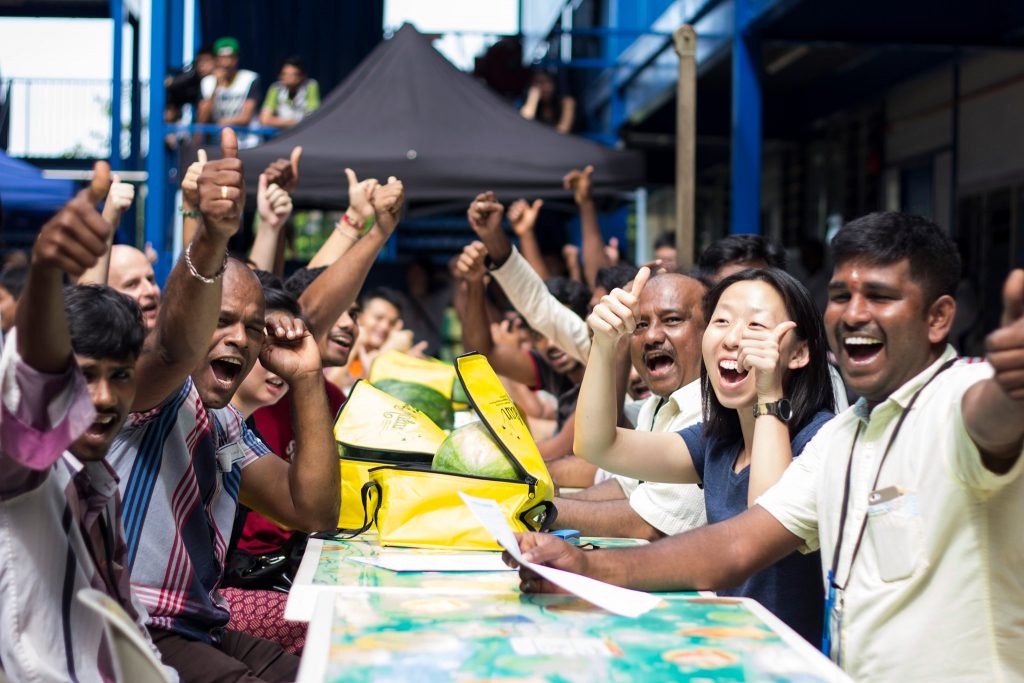
More tellingly, after the government announced plans to build new quick-build dormitories near residential areas, many Facebook users left xenophobic, racist, and Not-In-My-Backyard (NIMBY) comments. Some saw migrant workers as a source of danger or vice, calling for more security measures to be taken to “protect” the neighbourhood. Others fretted about whether these dormitories would affect property prices, or else saw migrant workers as potential disease carriers, and even blamed Covid-19 on their “poor cultural practices”.
These comments suggest that a large segment of the population continue to hold harmful stereotypes of the migrant community; stereotypes that are rooted in bigotry and ignorance. There are many potential reasons for this, and it would take an entire article just to unpack the varying threads of xenophobia made apparent by these comments. Nonetheless, one obvious reason—apart from residential and employment segregation—is that there are few spaces for migrants and locals to interact directly with each other. Consequently, migrant workers are seen as alien bodies, an ‘Other’ to be feared and despised.
Some NGOs, community initiatives, and social enterprises have tried to address this by curating events designed to promote migrant-local interaction. They hope that through such genuine interactions, more Singaporeans can see migrant workers as real people, not as abstract Others. For example, some local groups have tried to organise dinners where Singaporeans can meet migrants to hear more about their lives. Yet, such initiatives, however well-meaning, can sometimes amount to nothing more than “human petting zoos”, a criticism Debbie Fordyce, President of TWC2, raised in an interview with academia.sg.
The realities, however, are that we live in a highly unequal world, with segregated lives. What then, are some thoughtful ways to build community amongst migrants and locals without perpetuating existing power hierarchies or stereotypes? After all, it’s not that dinners between migrants and locals are a bad idea per se (in fact, I think they could be a wonderful idea), but that we should be thoughtful about the ways they are designed and framed.
One possibility would be for locals to participate in spaces where we can interact with migrant workers as equals, on their own terms. Migrant Writers of Singapore has been organising Human Libraries, most recently at the Migrant Literature Festival held in December last year at the National Library.
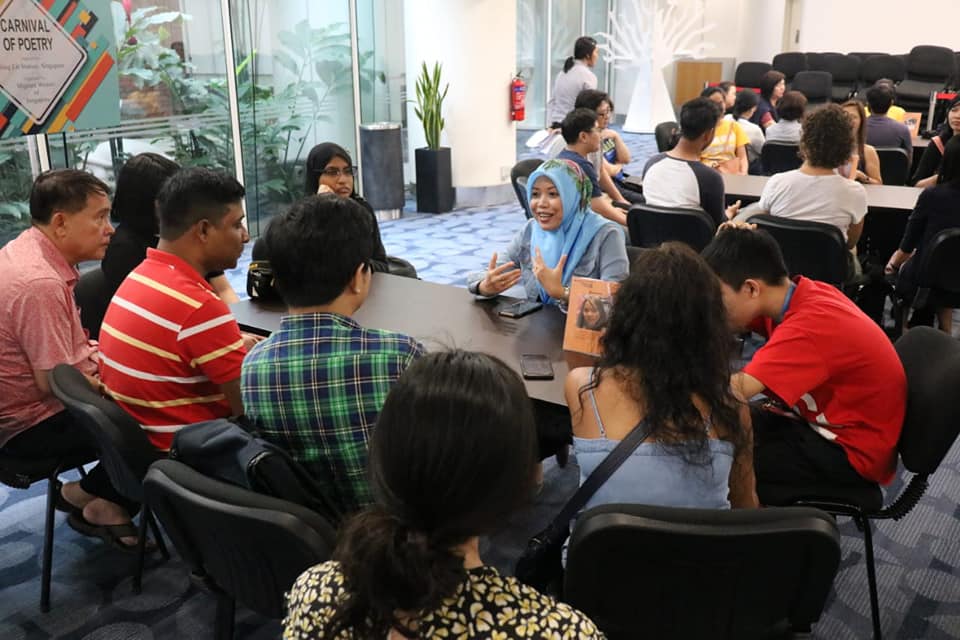
The Human Library is perhaps not too different from the dinners that some social enterprises have been organising, except the migrant writers do not charge a fee, and have complete autonomy in deciding how they want to be seen, and what they want to talk about. The emphasis is on giving migrant voices dignity and agency, not in exoticising them as pitiable subjects.
Migrant Writers of Singapore also organises Open Borders: Stories Have No Boundaries, a series of events where migrants and locals share personal stories, as well as Carnival of Poetry, a monthly poetry reading session that features both migrant and local poets. Said Bhing, a migrant poet, volunteer with HOME, and domestic helper from the Philippines, “I’ve been to these poetry events for five years, but I always see the same faces. I feel good when I see locals joining. I like it when they listen, and when they ask questions.”
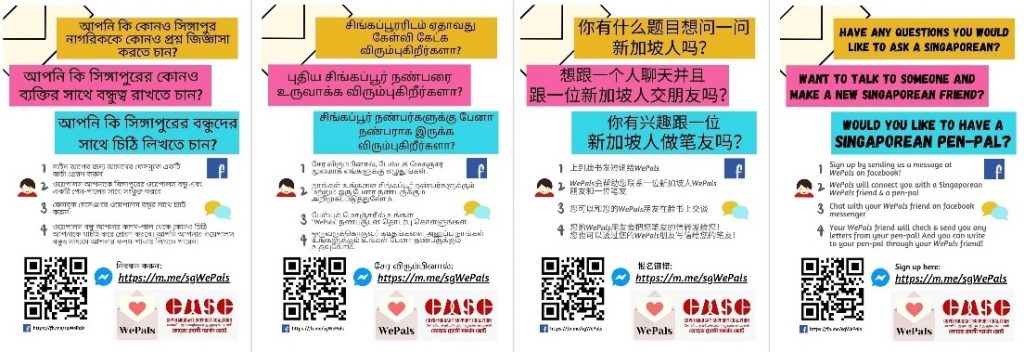
WePals, an initiative under CMSC, is a recent befriending and penpal initiative that hopes to build bridges between the migrant and non-migrant community. Ronald Wong, a lawyer who has been volunteering with migrant NGOs for more than ten years, started it when many of his migrant friends stuck in dormitories reported experiencing much anxiety and boredom.
“What they do appreciate is somebody listening,” said Ronald. The initiative has amassed a total of 440 sign-ups so far, comprising both migrants and locals. All Singaporean befrienders are trained in adapted psychological first aid by volunteer trainers from the PSS community. Befrienders are guided to detect escalating signs of distress that might mean they have to refer their migrant friends for professional tele-counselling or further case work management.
WePals emphasises long-term commitment, and values active listening. It hopes that genuine friendships can blossom through it, even if the platform itself creates a level of artifice.
Said Ronald, “It is essentially a platform that helps people make friends and to connect them to a supportive community. The challenge today is that most of us live in our insulated social bubbles—our realities are usually far removed from people of very different demographics. It doesn’t matter whether it’s migrant workers, or the elderly, or someone who lives in a rental flat or Sentosa Cove.We have to ask ourselves, given these boundaries, what helps to transcend them? And work from there.”
Ronald also hopes that WePals can help build the “empathy bridge”. From an advocacy standpoint, he says that “it is precisely from that friendship that we begin to understand, to feel enough to want to speak up about the problems they are facing.”
A common criticism of befriending programs is that it makes befrienders wash their hands off more systemic issues, thinking that empathy or “kind thoughts” alone are sufficient.
“They are not mutually exclusive,” Ronald adds, “We have to look at it from a bigger picture: If we want structural change, we need members of the general public to think and feel about certain things. One of the best ways to do that is precisely to help members of the Singapore public have friendships with migrant workers in the hope that we are building empathy, and not just sympathy, or abstract theorizing. Through that, people will start to realize the real situation of their migrant friends, and make the necessary calls for change.”
Ronald shared an anecdote about one befriender who learned that his migrant friend had not been paid a salary. The befriender escalated it to CMSC, who then reached out to provide assistance.
“I don’t know how much he (the befriender) was involved in migrant worker related issues before this, but it gives him a glimpse into common issues that many migrant workers face,” Ronald said.
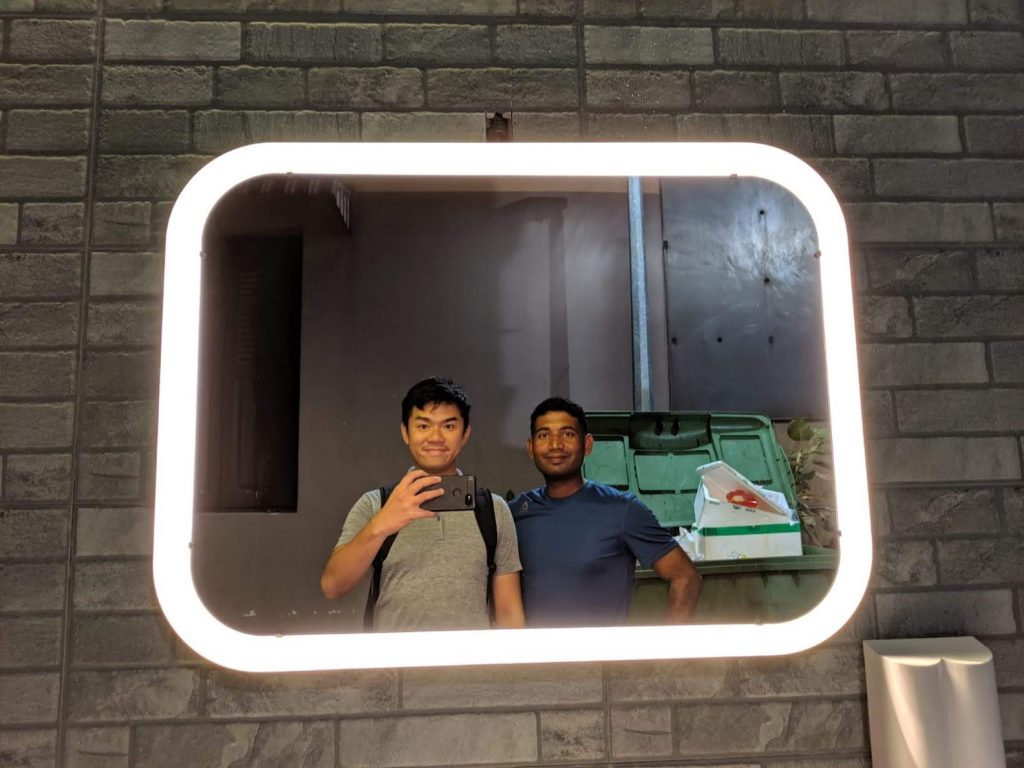
The best friendships are often accidental, unmediated through formal initiatives or events. This was how Mamun, Bangaleshi and founder of Singapore Migrant Friends, and Cai Yinzhou, Singaporean and Director of Citizen Adventures, first met. Said Mamun, “Around seven years ago, I moved to Geylang, behind Yinzhou’s house. We were playing badminton in the back alley. Sometimes, he would come and talk to us. Normally we don’t have any opportunity to talk to Singaporeans nor have the chance to have deep conversations.”
Mamun shared that Yinzhou had approached one of his roommates, Bashar, during one of those badminton sessions, asking if he could join them. They exchanged contact numbers, and sometimes had coffee together after work. Slowly, they built their friendship and developed mutual trust.
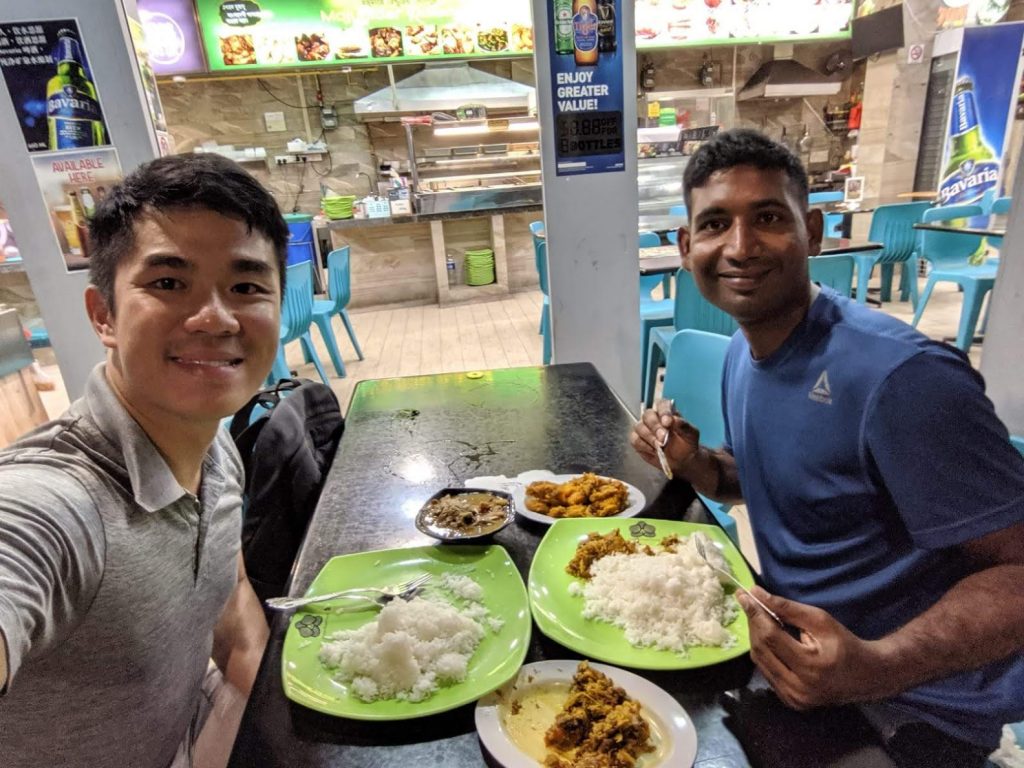
“It wasn’t a big deal for me. I was just hanging out with my friends, but it seemed like a surprise for most people. There were comments from my family and friends—it was a spectrum of reactions, from curiosity to ignorance. ‘Why are you hanging out with ‘dangerous’ people?’ They had a perception that this was a ‘special event’ when it should be no big deal.”
Mamun says many Singaporeans however continue to think that migrant workers are dangerous, not daring to approach them out of fear or shyness. He added that Singapore Migrant Friends, an informal collective consisting of 30 – 40 migrants from four countries (Bangladesh, Indonesia, Philippines, and Myanmar) that gathers every Sunday to play volleyball, has partnered with some local organisations to help bridge that gap.
He stressed that there is a mutual desire to learn about each other’s lifestyles and cultures—“The important thing is we need more conversations between migrants and locals, more integration.” Sports, he says, is a particularly good way to build community because it is both free, and translates well across languages.
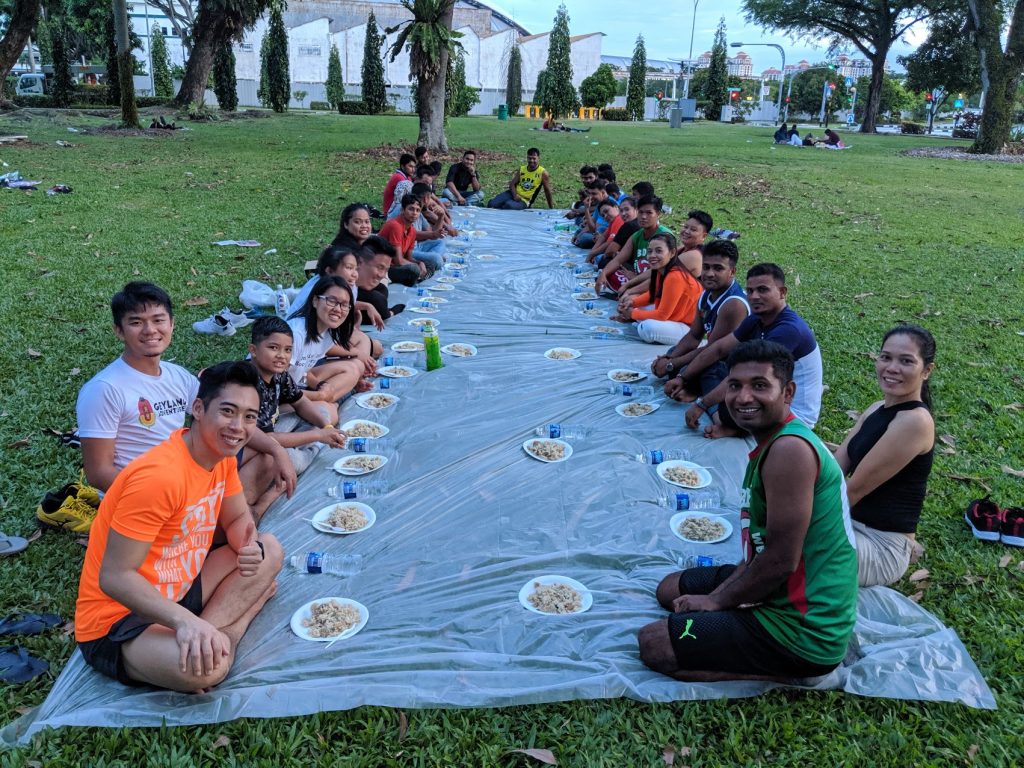
He said, “We have seen student groups who approach SMF looking to ‘promote migrant-local interaction’, but come with a whole slew of requests: they ask migrant workers to share about their culture, teach them their local languages. For three hours students will come, interact and distribute goodies, take lots of photos, say ‘Welcome to our event! This is super awesome!’ Then they leave, and we never see them again.”
Mamun added, “I know some organisations go down to dormitories to give food. They only come one time, just say hi, hello, distribute something, and leave. This kind of short-term visiting is not really changing anything—they cannot hear our struggles, hopes, and dreams. We need to have long-term relationships, like my friendship with Yinzhou and others.”
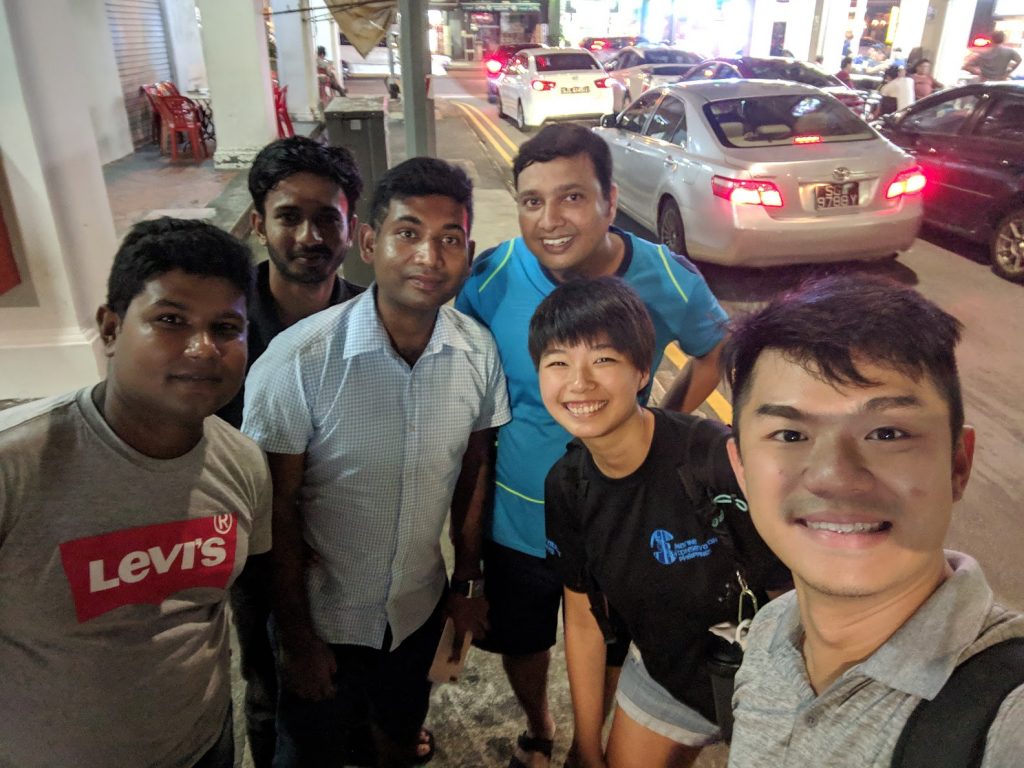
Mamun also shared about some constraints in accessing spaces that could facilitate migrant-local interaction: migrant workers often cannot afford to participate in common entertainment activities like watching movies with locals, due to cost issues. They also cannot easily access common spaces like public community centers or sports halls because users need an NRIC or SingPass to reserve these sorts of venues.
Yinzhou says that the segregation of social spaces is where public policy and public perceptions intersect to perpetuate social divides. He expressed a desire to see community spaces designed for real migrant and Singaporean integration, celebrating ground-up initiatives such as Project Chulia Street.
Ultimately, if we care about building inclusive societies, we need community spaces that can help facilitate the kinds of friendship that mean we see each other as peers, not as inferiors and superiors.
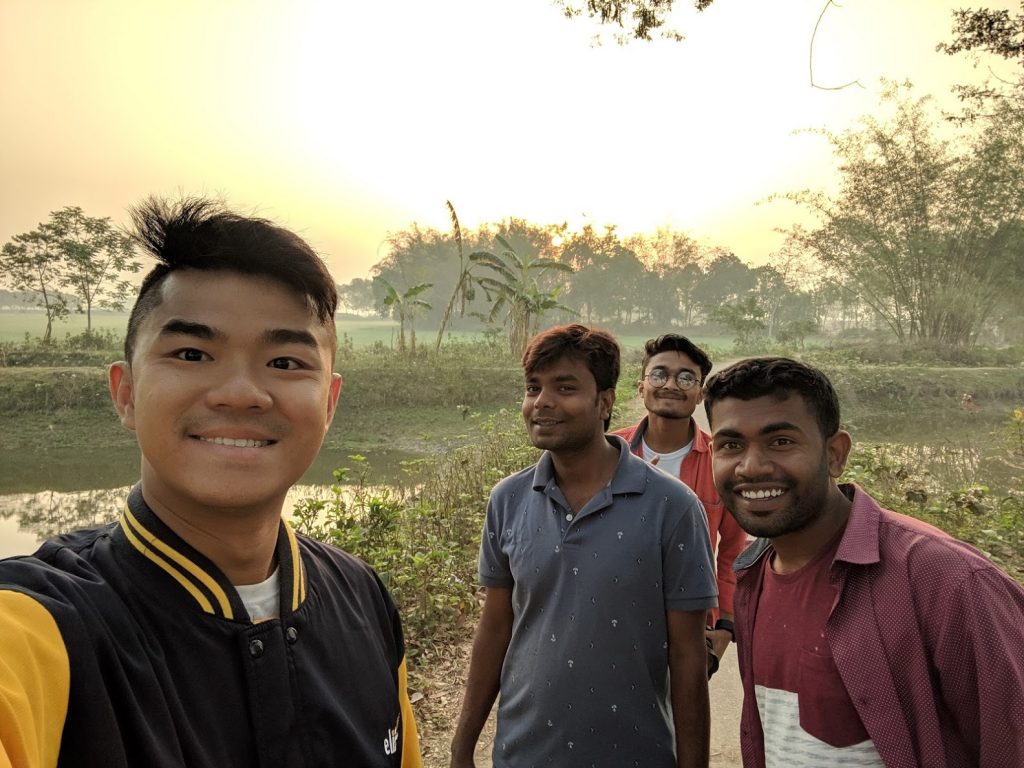
The recent NIMBY attitudes that have resurfaced in full force make me question if the migrant-local community I dream of—of genuine friendship with one another—is too idealistic. Some of these views seem so entrenched that changing hearts and minds seem like an impossible task, or at least one that would require great passion and patience.
But to give up simply because it is frustrating to engage would be akin to legitimising the status quo. For those of us who care, we have to remember that racism and xenophobia are not simply intellectual issues that our migrant friends can simply decide to wash their hands off. These are real, lived experiences, and the public comments by strangers are no less hurtful just because they are mediated by the virtual sphere.
After dinner with Zakir one night at Hans Cafe (a favourite haunt of his) in the National Library, we sat in silence as we contemplated the many challenges that continued to affect migrant workers in Singapore: high agency fees, low wages, inhumane employers and continued discrimination by locals. “Will anything change?” I had asked, trying my best not to wring my hands in despair. Zakir took a sip of his teh, and laughed. “Slowly lah, Yong, slowly. We have to be patient.”
Have something to say about this story? Write to us at community@ricemedia.co.



